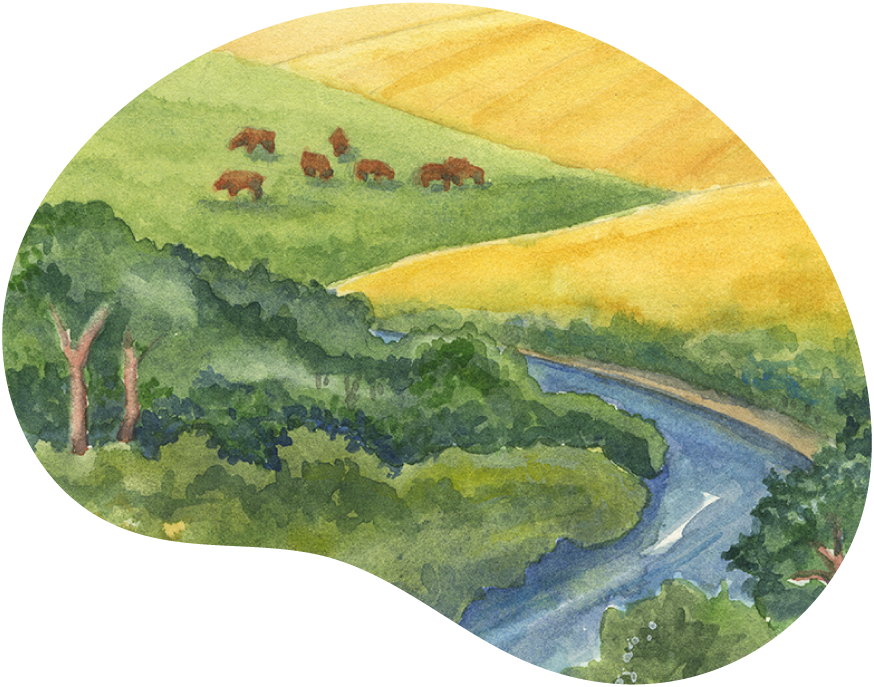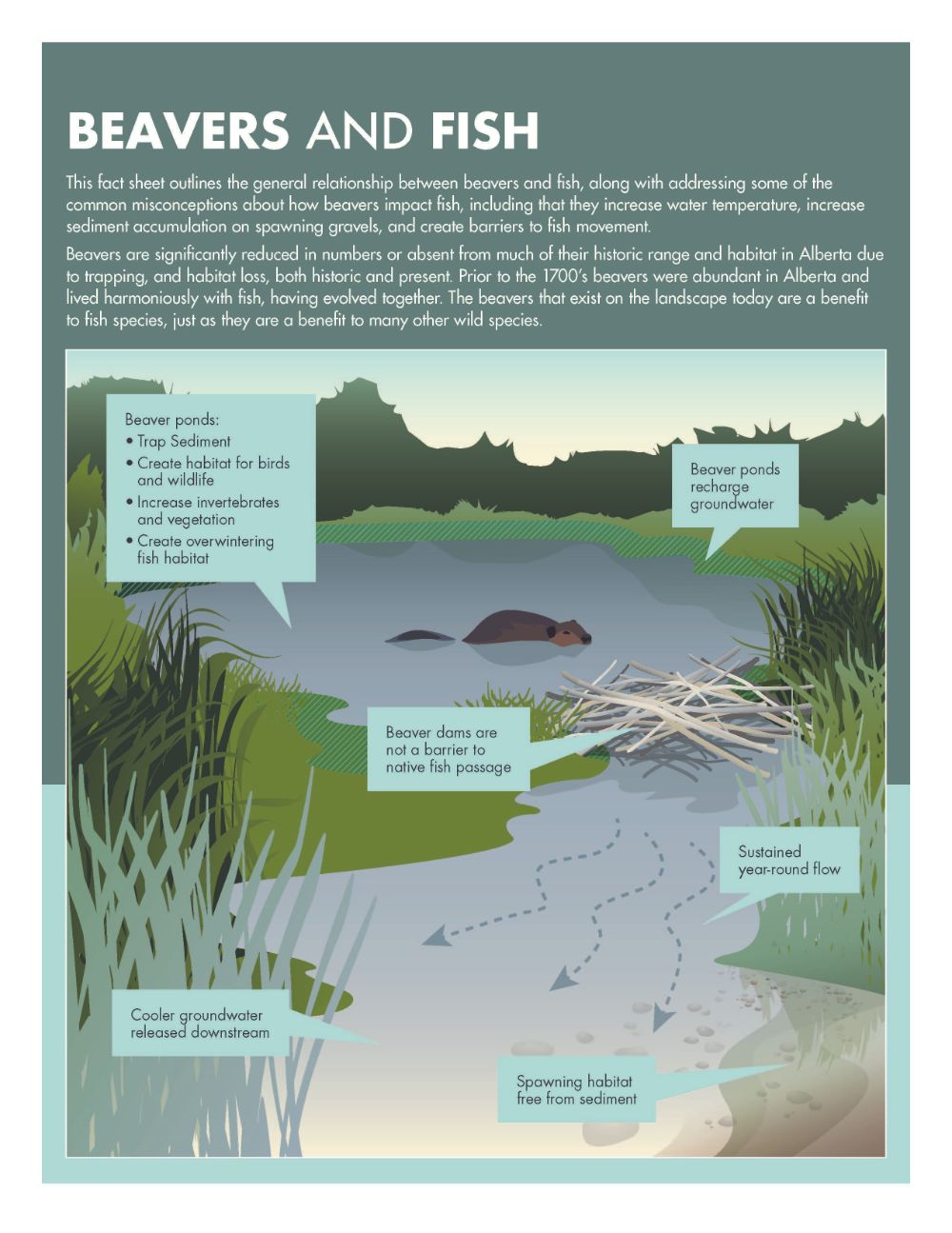
Beavers and Fish Fact Sheet
This fact sheet was created in partnership with the Miistakis Institute as part of the “Working with Beavers” project & outlines the general relationship between beavers and fish

Publiation has been added to cart


This fact sheet was created in partnership with the Miistakis Institute as part of the “Working with Beavers” project & outlines the general relationship between beavers and fish

Nature’s best builder is the beaver. If we want to understand them, recognize their role on the landscape, and figure out how to live with them, a good starting point is to educate ourselves on their ecology, life history and their connections to watersheds.

Caring for The Green Zone Newsletter Volume 13 – 30th Anniversary Edition

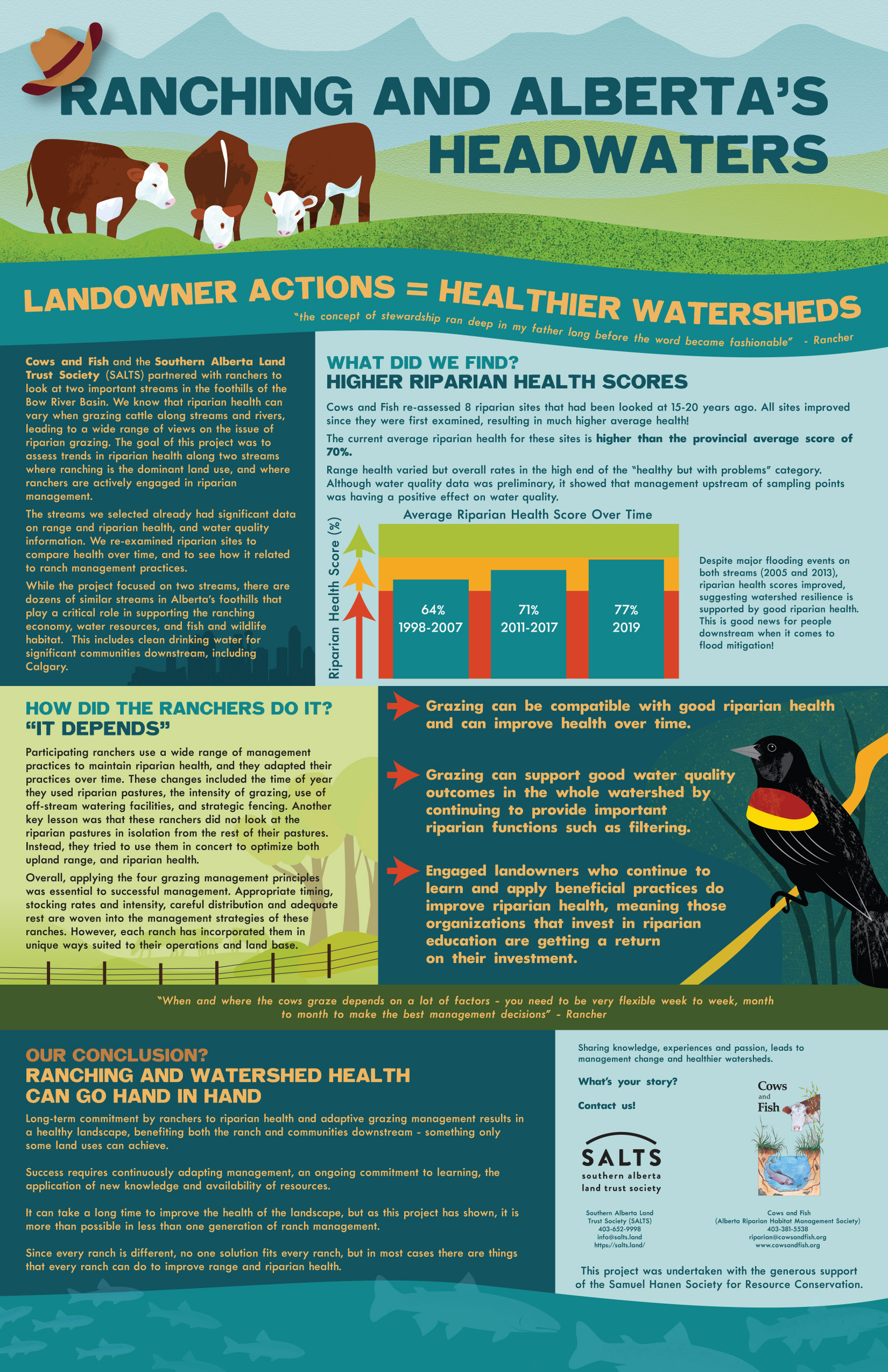
Cows and Fish and the Southern Alberta Land Trust Society (SALTS) partnered with ranchers to look at two streams in the foothills of Alberta in the Bow River watershed. The goal of this project was to assess trends in riparian health along two streams where ranching is the dominant land use and where ranchers are actively engaged in riparian management. This factsheet summarizes the project goals and results. Learn how ranching and watershed health can go hand in hand.

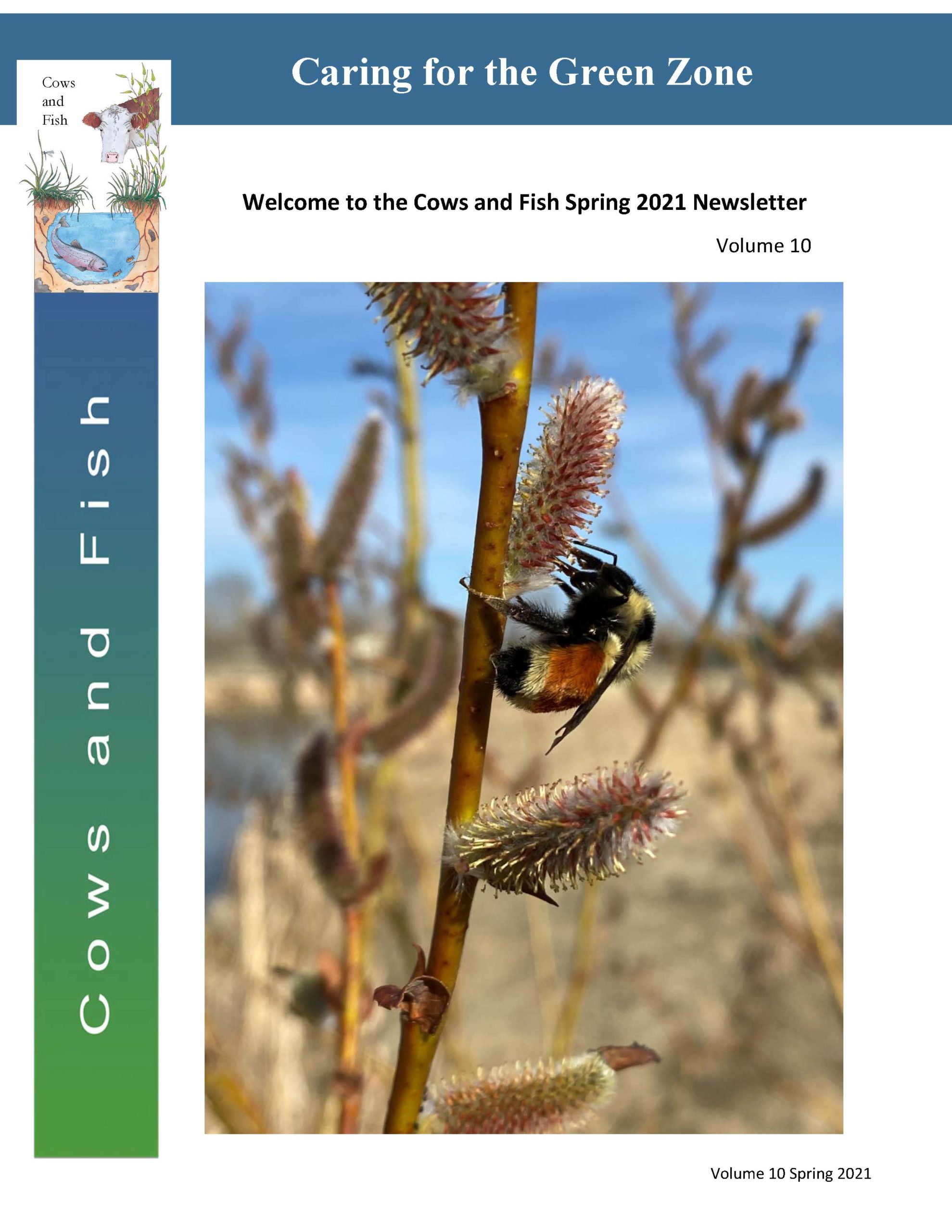


Agricultural landscapes can help store or sequester carbon through beneficial management practices. This 4 page factsheet provides information on how soil carbon can benefit landowners and their land, management practices that can prevent soil loss and restore carbon stores and grazing practices to increase carbon storage opportunities.

From the coffee we drink, to the water we brush our teeth with, our daily routines are linked to watersheds. Whether we live in town or out, the health of our watersheds impact our daily lives.

Wetlands, to some, are priceless. Economically it’s hard to put a price tag on them. Could we do without wetlands? No! Beyond all the things we now know that wetlands contribute, those things called ecological goods and services, a local pond provides many of us with an education, experiences, risks, inspiration, entertainment, connections and appreciation.
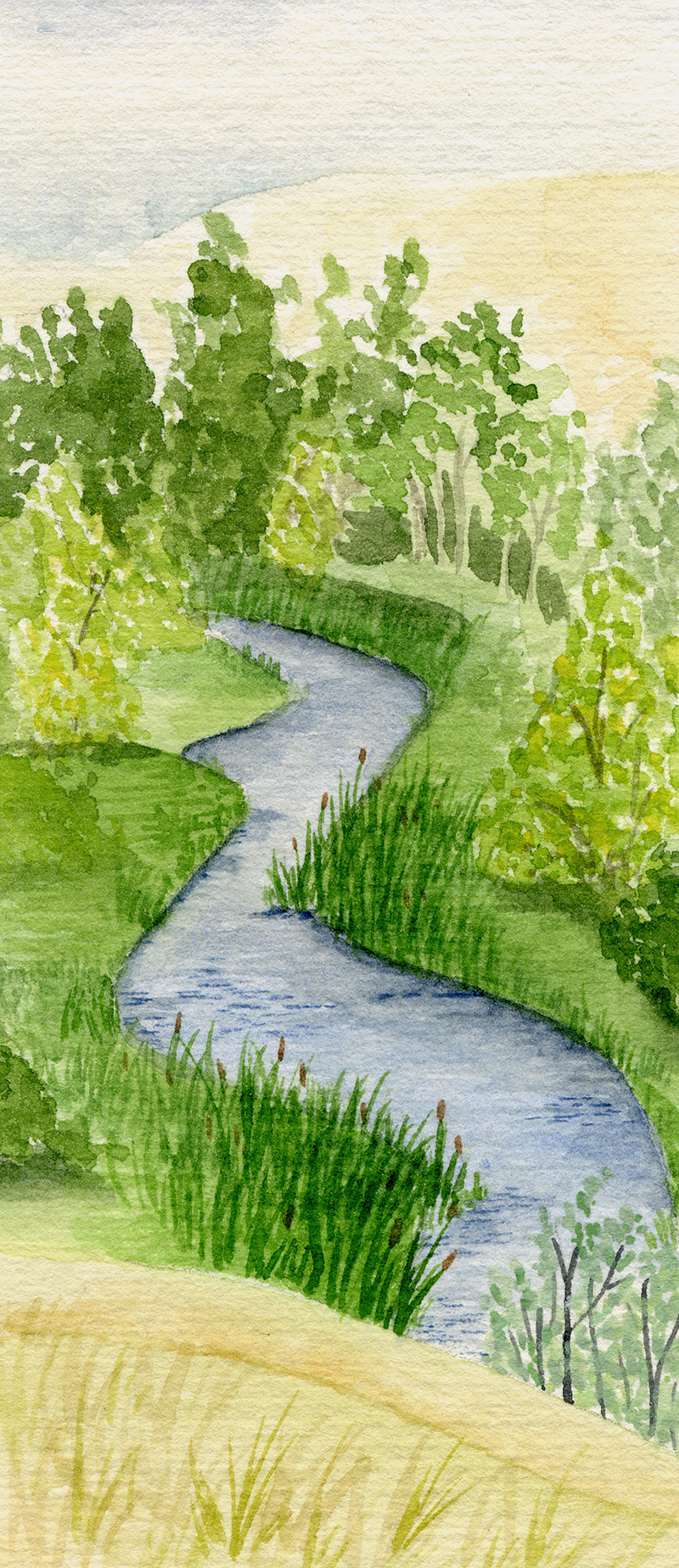
Stewardship, specifically environmental stewardship, is the act of caring for our natural resources – land, water, wildlife, and air – to sustain, conserve, protect and restore the environment for our generation and the generations still to come. Environmental stewardship pays big dividends in the form of clean water, forage productivity, biodiversity, and water storage, but who pays for stewardship and how much do we owe?

There are a variety of lakes and wetlands in Alberta, from the clear blue mountain lakes to willow-ringed potholes of central Alberta. They all have a many things in common, including their value as water filters, storage tanks and critter condominiums
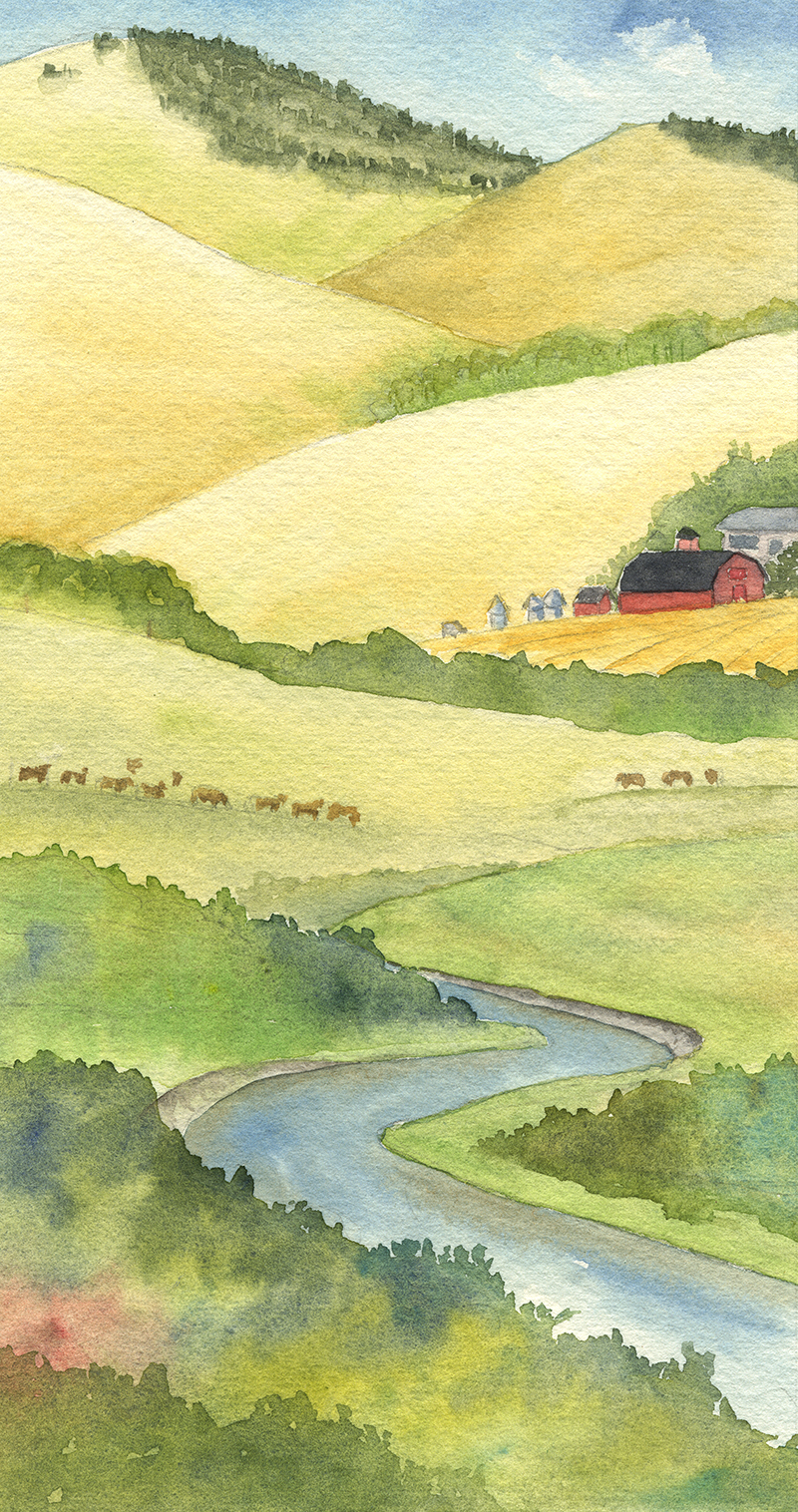
Don’t let stream horsepower get away on you! Stream and river channels are seldom straight. They meander, or bend, to balance energy and work. Some simple physics helps us understand the nature of streams and rivers.

Community-based watershed and stewardship groups are growing in number in Alberta. Cows and Fish works with these groups to create a better understanding of riparian areas, their value, function and health.

A reality for many living in Alberta and across the Prairie Provinces is that for most their water comes from a local prairie-fed source. This differentiates these watersheds from headwater systems, whose flows come from our glaciers and mountains. This article provides some insight into these unique prairie systems.

